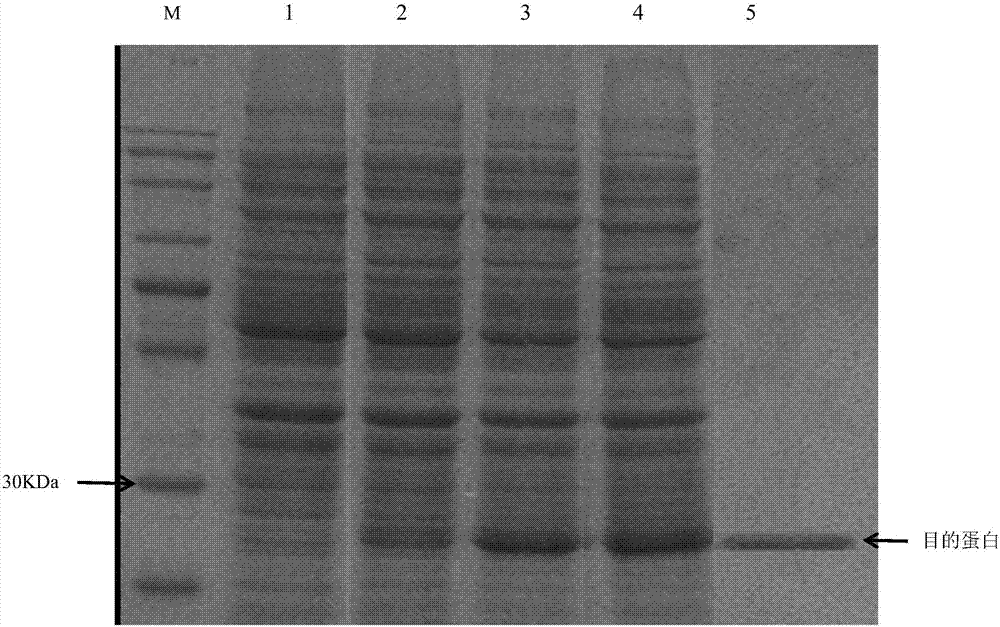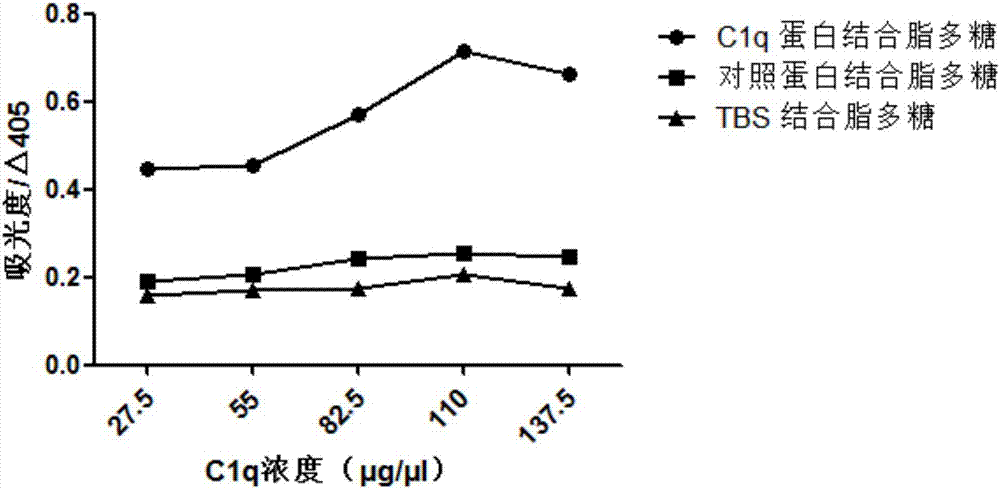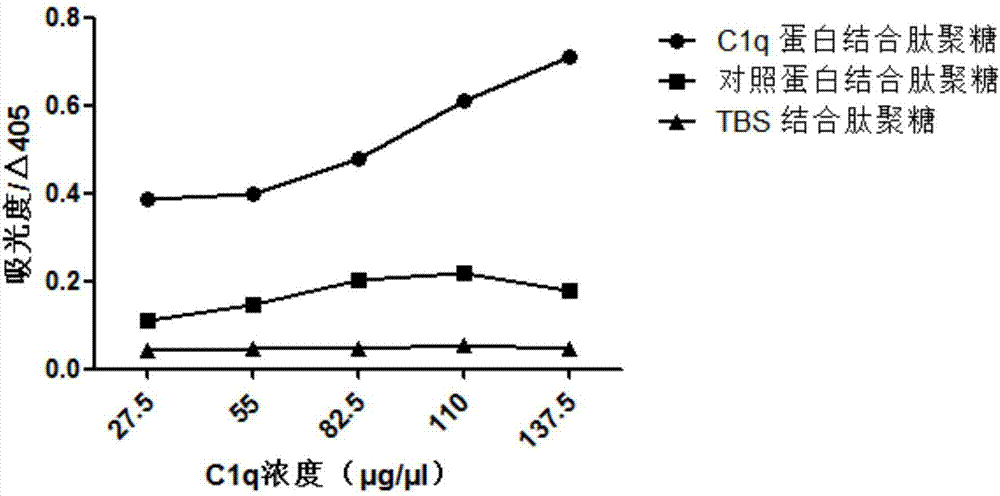Sinonovacula constricta C1q (Complement 1q) gene, encoded protein, cloning method of sinonovacula constricta C1q gene and recombinant sinonovacula constricta C1q gene engineering bacterium construction method
A technology of genetically engineered bacteria and encoded protein, applied in the field of encoded protein and its cloning, C1q gene of razor clam, and recombinant C1q genetically engineered bacteria of razor razor, which can solve the problems of decreased immune defense ability of razor razor, failure of antibiotics, drug resistance of bacteria, etc. problems, to achieve high-efficiency binding activity and agglutination activity, increase binding ability, and enhance immunity
- Summary
- Abstract
- Description
- Claims
- Application Information
AI Technical Summary
Problems solved by technology
Method used
Image
Examples
specific Embodiment 1
[0057] C1q gene cloning and sequence analysis
[0058] (1) Through the previous EST (Expressed Sequence Tag) analysis of the cDNA library of Vibrio parahaemolyticus-induced C1q, multiple EST sequences encoding the C1q gene were found, and the sequencing analysis of one of the EST clones showed that the clone encoded C1q of C1q partial fragments;
[0059] (2) RACE primer design: 3' RACE nested primers were designed according to the EST clone encoding the C1q partial fragment of razor clam constriction: 3' upstream specific primer 1: TGTGAACGACAGTAGTGACAGCAAA, 3' upstream specific primer 2: ATGGGCACAGAATGACCAACTAGAC, to amplify the 3' adapter Primer Adaptor3: GGCCACGCGTCGACTAGTACTT;
[0060](3) Razor clam C1q (3) RACE amplification to obtain the full-length sequence of the C1q gene, the specific steps are as follows:
[0061] a. Extraction of total RNA: Take the gills and hepatopancreas tissues (0.2g-1g) of razor clam constricta into a 1.5ml RNA free centrifuge tube, add 1.0 ...
specific Embodiment 2
[0065] Full-length cloning of C1q gene and construction and expression of recombinant protein
[0066] a. Total RNA extraction: Take each part of the razor clam (0.2g-1g) into a 1.5ml RNA free centrifuge tube, add 1.0 mL of Trizol reagent (purchased from Takara Company), and fully homogenize with a homogenizer. Centrifuge at 12000 g at 4 °C for 5 min, take the supernatant, add 0.2 mL of chloroform, shake and mix, let stand at room temperature for 5 min, centrifuge at 12000 g at 4 °C for 15 min, draw the supernatant into a centrifuge tube, add the Add an equal volume of isopropanol to the supernatant, mix well, let stand at room temperature for 5 minutes, centrifuge at 12,000 rpm for 5 minutes at 4°C, remove the supernatant, add 1 mL of ethanol with a mass percentage concentration of 75% to the precipitate, and place at 4°C , 12,000 rpm, centrifuge for 5 min, discard the supernatant, add 1 mL of 75% ethanol to the pellet to resuspend the pellet, 4°C, 12,000 rpm, centrifuge for...
specific Embodiment 3
[0073] Purification of recombinant proteins
[0074] a. Bacterial cell lysis: resuspend 100 mL of bacterial sediment with 10 mL of lysis buffer (imidazole concentration: 5 mM), add 1 mg / ml lysozyme, incubate on ice for 30 min, and sonicate the bacterial cell (sonication for 5 s, Stop for 10s, 6 times in total, power 30w, 10000g, 4°C, centrifuge for 20min, collect the supernatant;
[0075] b. Protein purification: draw 1 mL Ni-NTA Sefinose TM Put Resin on the column, wash twice with sterile water, and then equilibrate once with lysis buffer (containing imidazole concentration 5mM); mix the supernatant obtained in step (a) with the Ni-NTASefinose that was previously treated on the column TM Resin mixed, mixed at 4°C for 2 h, collected effluent, eluted twice with wash buffer (imidazole concentration 40mM), 10mL each time, collected effluent respectively, added 1.25 mL elution buffer (imidazole concentration 250mM), eluted 2 times, the effluent was collected separately. Take ...
PUM
| Property | Measurement | Unit |
|---|---|---|
| Molecular weight | aaaaa | aaaaa |
Abstract
Description
Claims
Application Information
 Login to View More
Login to View More - R&D
- Intellectual Property
- Life Sciences
- Materials
- Tech Scout
- Unparalleled Data Quality
- Higher Quality Content
- 60% Fewer Hallucinations
Browse by: Latest US Patents, China's latest patents, Technical Efficacy Thesaurus, Application Domain, Technology Topic, Popular Technical Reports.
© 2025 PatSnap. All rights reserved.Legal|Privacy policy|Modern Slavery Act Transparency Statement|Sitemap|About US| Contact US: help@patsnap.com



